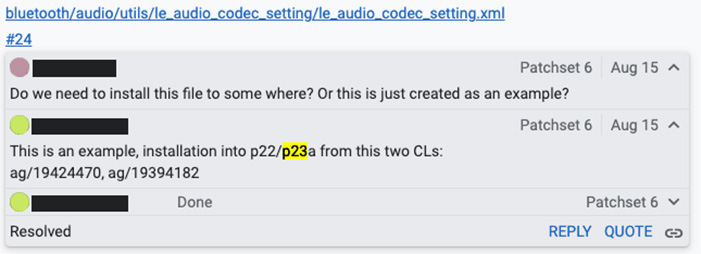More details about the upcoming Pixel 7 and 7 Pro cameras emerged, as well as potential hints of a third Pixel device — don’t get your hopes up for a ‘Pixel Ultra’ though.
Developer and leaker Kuba Wojciechowski obtained and shared several details about the camera hardware in the upcoming Pixel line on Twitter (via Android Police). Starting with the Pixel 7 and 7 Pro, Wojciechowski said both phones could sport the same Samsung GN1 primary sensor and IMX381 ultra-wide sensor as what was on the Pixel 6 and 6 Pro.
However, as Android Police notes, that isn’t much of a surprise. Google tends to hold onto camera hardware for multiple years and tune its camera software around that hardware to produce some pretty fantastic results. The Pixel 6 line introduced the first major camera hardware change in years, so it’s likely Google is only getting started with the GN1 sensor.
The Pixel 7 and 7 Pro will also sport the same front-facing camera — an 11-megapixel Samsung 3J1, according to Wojciechowski. Previous information gleaned from Google’s camera app also indicated the Pixel 7 and 7 Pro would sport the same front-facing camera. Android Police says the 3J1 sensor is supposed to offer more secure face unlock capabilities, adding more fuel to the fire of face unlock rumours. That said, a camera sensor on its own likely won’t hold up against dedicated face unlock hardware like what you’d find in the iPhone or Pixel 4.
Wojciechowski also tweeted that the Pixel 7 Pro’s telephoto zoom camera would sport a Samsung GM1 sensor instead of the Sony IMX586 found in the 6 Pro. Wojciechowski suggests Google made the switch since the GM1 offers similar performance but, being a Samsung sensor, might have more consistent image processing with the GN1 primary lens.
Another ‘Lynx’ reference
Next up, Wojciechowski talks about a device bearing codename ‘Lynx’ or L10. Lynx is rumoured to be another high-end Pixel device set to arrive this year (perhaps we’ll finally get that Pixel Ultra that’s been rumoured for years). Alternatively, Lynx could just be an internal testing device for Google.
Wojciechowski says Lynx sports the same primary camera sensor — the GN1 — but has a secondary Sony IMX787 sensor plus an unknown 13-megapixel IMX712 for the selfie camera.
While this isn’t the first time Lynx has shown up (Android Police says the codename was spotted back in May 2022), there isn’t much known about Lynx so far. With only a few limited details about the camera available, it’s hard to say what it is. We know it isn’t the rumoured Pixel foldable or upcoming Pixel Tablet, though, since Wojciechowski addresses them next.
Pixel Tablet and foldable cameras
Starting with the Pixel Tablet, Wojciechowski says it will come with two cameras, both of which use the IMX355 sensor that was in the Pixel 6 selfie camera.
As for the rumoured foldable, Wojciechowski shared details on a ‘P7,’ which is likely the Pixel Fold (or Notepad, or whatever name Google eventually gives it). While it’s not clear what lenses the P7 will have, Wojciechowski says we can expect it will use the GN1 sensor for the main camera, an IMX363, an ultrawide IMX386, and an IMX355 selfie camera.
That’s it for this leak. There’s a ton of information, but as with any leak, it’s important to maintain a healthy dose of skepticism. Wojciechowski says this too, noting that the information was “obtained through data digging and might not be 100% accurate.”
Still, if accurate, it sounds like the Pixel 7 and 7 Pro will focus on software to improve camera performance and won’t significantly alter the camera hardware on offer.
Source: Kuba Wojciechowski (Twitter) Via: Android Police











